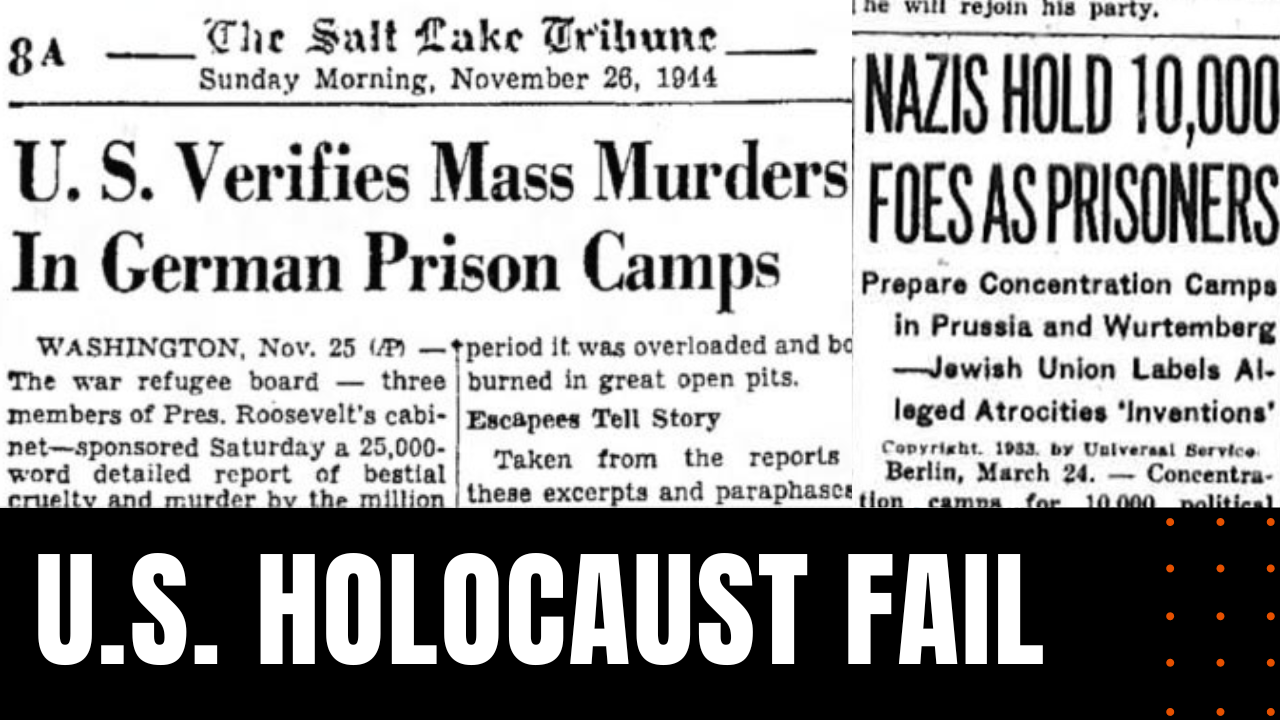America’s Holocaust Fail

After Hitler’s “final solution” had been launched in utmost secrecy, at what historians call the Wannsee Conference of January 20, 1942, by the summer of that same year, reports of Jewish deportations and death camp atrocities began to trickle west. When Rabbi Stephen Wise, head of the American Jewish Congress and a longtime friend of FDR, provided Under Secretary of State Sumner Welles with irrefutable documentation that Jews were being deported into death camps, Roosevelt invited Wise to the White House to develop a plan of action against the Nazi’s now apparent efforts to eliminate the Jews. Nine days after their meeting, Roosevelt induced Churchill and Stalin to join him in a Declaration on Jewish Massacres, which received wide publicity in the American and British press, along with leaflet drops behind enemy lines, forewarning that those participating in the holocaust would face future convictions as war criminals.
American Resolve Crumbles
The first test of American resolve came in the summer of 1943, when the Treasury Department pressed a plan to ransom 70,000 Jews from Romania at a cost of $170,000—some $3.2 million in today’s currency—deposited into a Swiss account for Romanian officials to collect after the war. FDR approved the deal, however, entrenched antisemitic sentiment within the State Department led to foot-dragging and inaction on the plan. FDR next agreed to a Swiss proposal to rescue Jewish children hiding in France, and after Treasury again green lighted the necessary funds, diplomats at State willfully scuttled any forward movement on the rescue plan. Officials at Treasury were outraged by State’s determined stonewalling against their efforts, compiling their evidence into a paper, entitled “Report to the Secretary on the Acquiescence of This Government in the Murder of the Jews,” leading to a decision by the president to establish a cabinet-level rescue commission that stripped State of any future authority over rescue efforts, charging that State had been “guilty not only of gross procrastination and willful failure to act, but even of willful attempts to prevent action from being taken to rescue Jews from Hitler.”
FDR Responds
FDR needed little persuasion after he read the damning report, signing Executive Order 9417 on January 22, 1944, which established a War Refugee Board or WRB, thereby stripping State of any future involvement in an American response to Hitler’s “final solution.” Despite a pressing military focus to halt Nazi aggression on the battlefield and an admitted limited ability to stop the genocide of Jews, after Hitler ordered the deportation of 700,000 Jews from Hungary—the largest intact Jewish community in Europe—the WRB dispatched Swiss diplomat Raoul Wallenberg to Budapest, where he used funds funneled through the WRB to save thousands of Jews, at the same time, the WRB induced New York’s Francis Cardinal Spellman to record a radio broadcast reminding Hungarian Catholics that persecution of the Jews was in direct contradiction of Church doctrine.
Blackest Crimes of all History
Still seething over the State Department’s glaring malfeasance, FDR took pains to outline America’s post-war plans to prosecute anyone taking part in the genocide of Jews. “In one of the blackest crimes of all history,” he said in one of his legendary fireside chats, “the wholesale systematic murder of the Jews of Europe goes on unabated every hour. That these innocent people, who have already survived a decade of Hitler’s fury, should perish on the very eve of triumph over the barbarism which their persecution symbolized, would be a major tragedy.” In terms of retribution, he went on to say that, “This applies not only to the leaders but also to their functionaries and subordinates in Germany and in the satellite countries. All who knowingly take part in the deportation of Jews to their death … are equally guilty with the execution.
